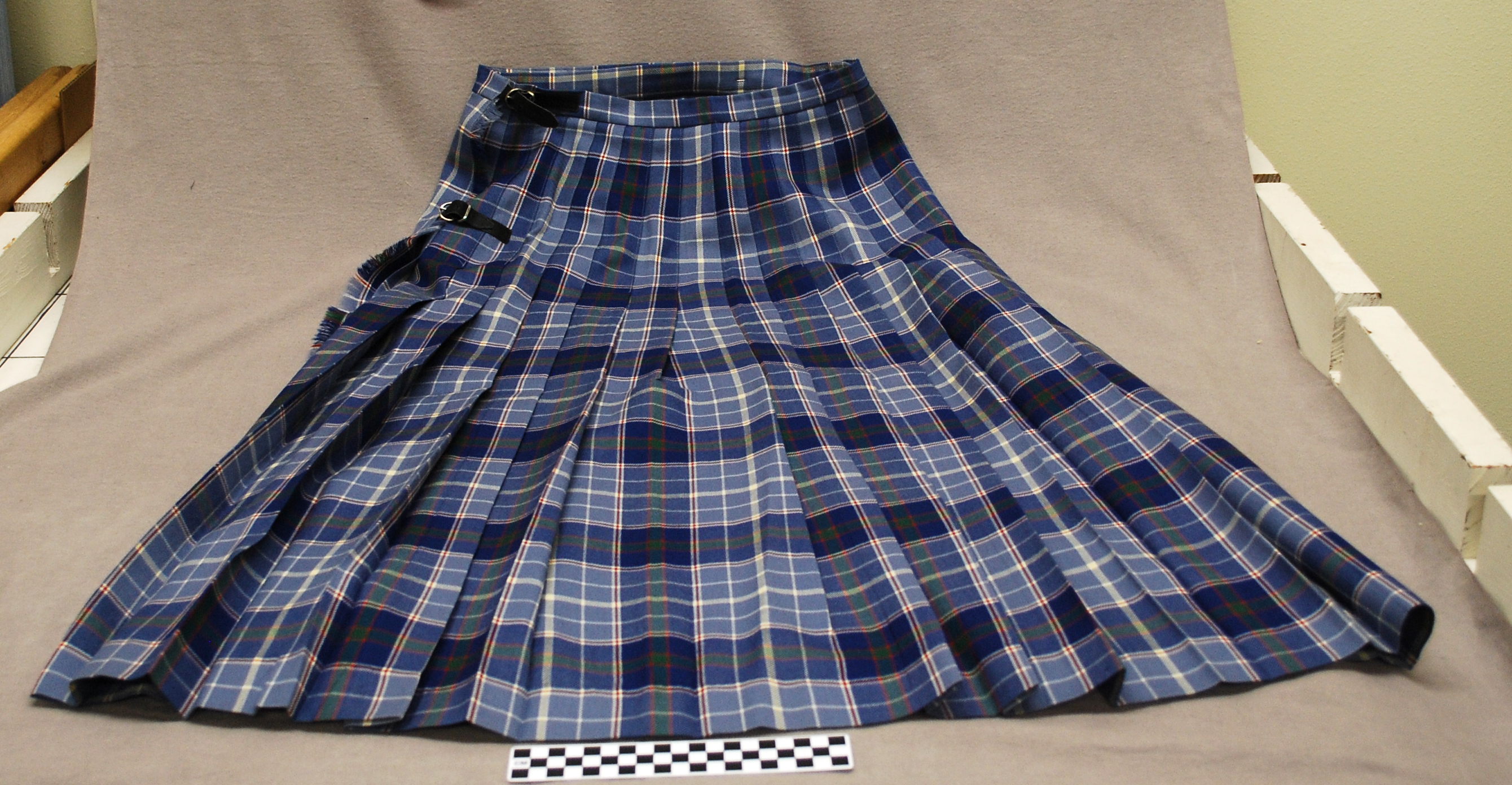This object is a women’s kilted skirt that is made in the Texas Bluebonnet Tartan. The Texas Bluebonnet Tartan is the official tartan of Texas and was designed by June Prescott McRoberts from 1982 to 1985. McRoberts designed this pattern based on inspiration from the Texas state flower, the Bluebonnet. She worked under the guidance of the Scottish Tartan Society in Scotland and registered this pattern with them on January 15th 1985. The Scottish Tartan Society was the official register for all Scottish tartans; it became defunct around 2000. The museum that the STS built in Franklin, North Carolina is still functioning. Now the tartan is registered with The Scottish Register of Tartans. The Texas Sesquicentennial Committee (150th Anniversary Committee) adopted the Bluebonnet Tartan as the Sesquicentennial Tartan in 1986. On May 25, 1989, the Texas Bluebonnet Tartan became the official State Tartan for the state of Texas by In-House Concurrence Resolution #242.
A tartan is a woven cloth that has interlocking stripes, running horizontally and vertically throughout the cloth forming a checkered pattern. The pattern became known as a tartan and is mistakenly called plaid by many. A plaid is actually a tartan blanket or long piece of tartan fabric. Tartans have been in use for several thousand years, but today tartans are almost exclusively associated with Scotland and Scottish Clans. Originally, tartan designs had no names and no symbolic meaning. Because the the cloth was locally made it is likely that some colors and designs were more common in some areas than others, but no regulated or defined “clan tartan” system ever existed. Even without the concept of a “clan tartan,” this type of material was extremely popular in the Scottish Highlands.
In 1745, The Battle of Culloden took place between the British, led by the Duke of Cumberland, and Prince Charles of Scotland. The British forces won the battle and ended the Jacobite military rebellion. Following their victory, the British sought out Scots who were loyal to Prince Charles, massacring many and causing others to flee abroad. As part of their efforts to eliminate Scottish rebels The Act of Proscription was enacted in 1747, outlawing tartan, and all other symbols of Scottish Highland culture. Tartan could not be worn or made, and because of this it is possible that several patterns were lost, but it also helped preserve them as well. Scots still would wear their tartans as a symbol of Scottish pride and also resistance to the English. In 1782 King George III repealed The Act of Proscription which led the way for tartan becoming the Scottish symbol it is today.
After the repeal, textile producers started creating new tartans as well as reproducing older patterns. These merchants started naming the designs based on either the region that the design came from, the names of clan chiefs shown wearing that design in old paintings, and so forth. The names were used just to make it easier to identify the patterns, they were not meant to be representative in any way. Though with the visit of King George IV to Scotland in 1822, tartans became even more popular because the Heads of the Scottish Clans were told to wear their “clan tartans.” Most did not know their tartans because there had never been a “clan tartan” before, so they reached out to the producers of tartan cloth trying to find out what their proper tartan was. The most famous, and inventive, source used to identify “clan tartans” at the time was the Vestiarium Scoticum. Now accepted as a forgery, the Vestiarium Scoticum, was widely popular in the mid-1800s and was the basis for many of the “clan tartans” still in use by modern Scottish Clan Societies today.
Today for a tartan to be recognized as legitimate it must be registered with The Scottish Register of Tartans. People all over the world wear tartan either as representative of their Scottish ancestry, or as a fashion choice. Individuals can even create and register their own patterns, just like The Texas Bluebonnet Tartan was created for Texas Scots.
